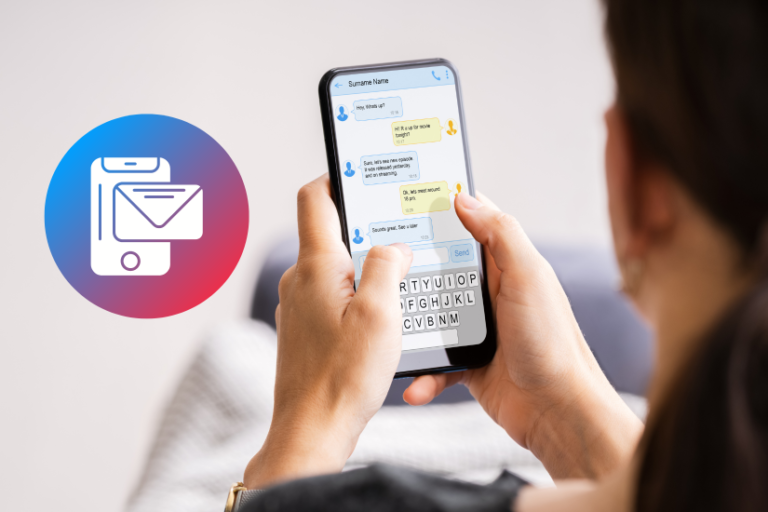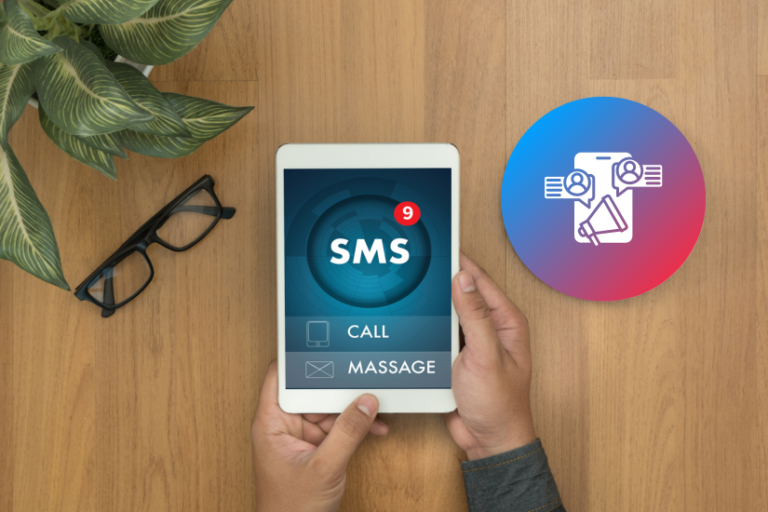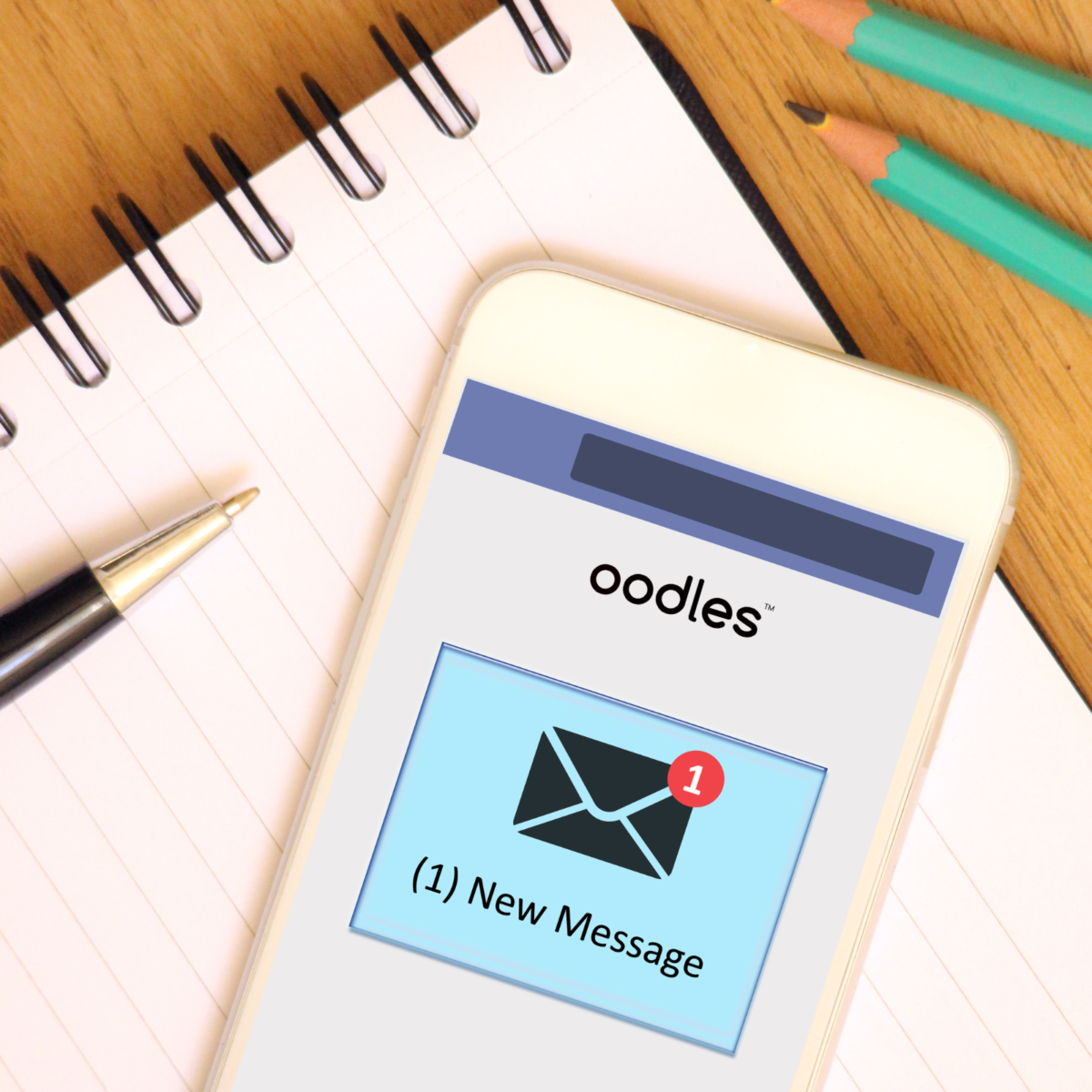
SMS marketing is permission-based marketing. Businesses must obtain permission from the customer before they can send them text messages. This permission can be given during sign-up for a newsletter or blog subscription, through a contact form on your website, or by simply asking customers to opt in when they make an in-store purchase.

SMS messaging in 2022 and beyond
If you’ve never considered SMS messaging a marketing channel, now’s the time to rethink your strategy. In 2022 alone, there’ll be 4.1 billion people using SMS, and that’s just on mobile.
As mobile devices continue to advance in intelligence and connectivity through the Internet of Things (IoT), SMS marketing will experience a surge in popularity compared to other channels such as email, web push, and social media. Personal assistant devices like Google Home and Amazon Echo will simplify voice-based message delivery, making it even more convenient for users to interact instantly with your brand on their preferred channel. SMS is extensively utilized by 53% of marketers worldwide.
How to do SMS marketing?
To get started, you must first choose an SMS marketing software. You can look into the top SMS providers in the market or get a recommendation from your colleagues on which one they like best.
Now that you have chosen your SMS marketing software, it’s time to decide which one of your marketing goals you want to achieve via SMS.
SMS marketing works best when used for a specific purpose. For example, if you want to attract more customers and increase sales, having a great “sales offer” will drive those shoppers through your doors. Suppose you are looking to recover abandoned carts and re-engage with customers who were about to purchase from you but dropped off at the last minute. In that case, focusing on cart abandonment in your messaging strategy is critical.
You also need to know how much revenue each of these campaigns can bring back for your business and how many customers it can help engage with your brand again. It will give you an idea of if there is enough potential ROI through these campaigns that would make them worth spending resources on (both time and money).
Step 1: Decide on your campaign goal
The first thing you need to decide on is the purpose of your campaign and what you want your customers to do. For example, are you encouraging them to download an app? Are you promoting a sale or a new product? A clearly defined goal will streamline the rest of this process.
There are several pitfalls that many SMS marketers fall into when selecting their goals, so it’s essential to know how to avoid them. First, don’t try and emulate other people’s goals; chances are good that you’ll be disappointed if you don’t set goals that make sense for your business. Instead, use their ideas as inspiration and create your unique ones.
Second, while being ambitious with business goals is excellent, they must remain realistic: if they’re too far out of reach, they will only inspire and drive individuals. Lastly (and most importantly), ensure every goal you select is tangible and measurable – there’s no point in setting a goal if you can’t determine its accomplishment!
Step 2: Decide on a CTA (Call-to-Action)
Decide on a CTA (call-to-action). This short and sweet phrase tells the customer what to do. The easiest way to go about this is to think of this as the single main goal you want your marketing campaign to achieve.
Are you trying to get customers into your store? “Visit us today” or “Visit us at…”
Do you want them to sign up for an email list? “Subscribe Now” or “Sign Up Today”
Is there something special going on? Try something like “Save now” or “Shop our sales.”
Are you running one of those free trial offers? Use something simple but direct: “Try it free” or “Start Your Free Trial.”
Step 3: Choose the right texting app for your needs
When choosing a texting app for your business, there are many things to consider. To choose the best app for your needs, you should ask yourself these questions:
What features are most important for my business?
How many contacts do I have, and how many messages do I want to send monthly?
What is my budget?
How much support will I need?
Do I need an easy-to-use interface or a powerful API?
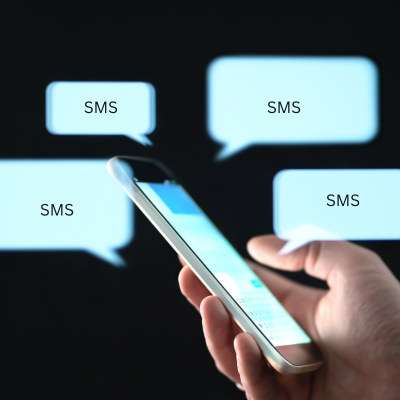
Step 4: Create an engaging message (and keep it concise)
Make your message relevant to your audience.
Keep it short and straightforward.
The average SMS message has about 160 characters, so ensure that your communication is easily understood by customers using as few words as possible. Due to limited space, consider using shorthand and acronyms, such as “UR” for “your” or “2” for “to.” However, avoid excessive use of these abbreviations, as they can become annoying over time.
Give them a call to action (CTA).
What do you want people to do? Sign up for an event? Check out your latest video. Whatever it is, ensure you provide an easy way for people to take advantage of whatever’s happening.
Step 5: Set up your opt-in process and get consent from subscribers
You’re ready to start marketing via SMS. But before you start sending text messages, make sure your business follows these guidelines:
Ensure your customers opt-in twice before receiving any messages from you. It is called a double opt-in process, and it protects the integrity of your SMS marketing list and keeps unsolicited texts from being sent out to people who do not want them.
Get consent from subscribers before sending them any messages. If you already have a subscriber’s phone number, ask for their permission explicitly by texting something like, “Hey! Would you mind if I sent you some occasional updates about our brand?”
When in doubt, request consent again via text message instead of emailing your contact database or buying lists from other companies. It’s better to be safe than sorry regarding compliance with the TCPA.
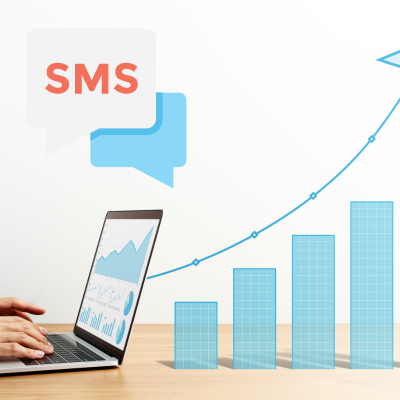
Step 6: Send your campaign and measure the results
When it comes to SMS marketing, there are four key metrics you should measure.
The open rate—the percentage of people who opened the message
The click-through rate (CTR)—the percentage of people who clicked a link in the message
The conversion rate—the percentage of people who made a purchase or completed some other action as a result of receiving the message
Your costs related to running this campaign (such as list building and budget)
Types of SMS Marketing messages:
SMS marketing is a very efficient way to send messages and offers to your customers. It’s also highly customizable, allowing for the most effective communication possible. You can deliver 1:1 personalized messages or broadcast general updates about your brand.
Promotional:
This message type promotes offers, discounts, giveaways, sweepstakes, and new product releases.
Transactional:
A transactional SMS message is an automated message sent to a customer after a specific action occurs. It could be an order confirmation, shipment tracking information, appointment reminders, or password reset notifications.
Service:
Service messages provide customers with important information about their accounts or services. Examples include bank balance alerts, flight updates, or package delivery notifications.
Reminder:
Reminder messages remind customers of upcoming appointments, events, or deadlines. It can be helpful for service-based businesses or for sending out event invitations.
